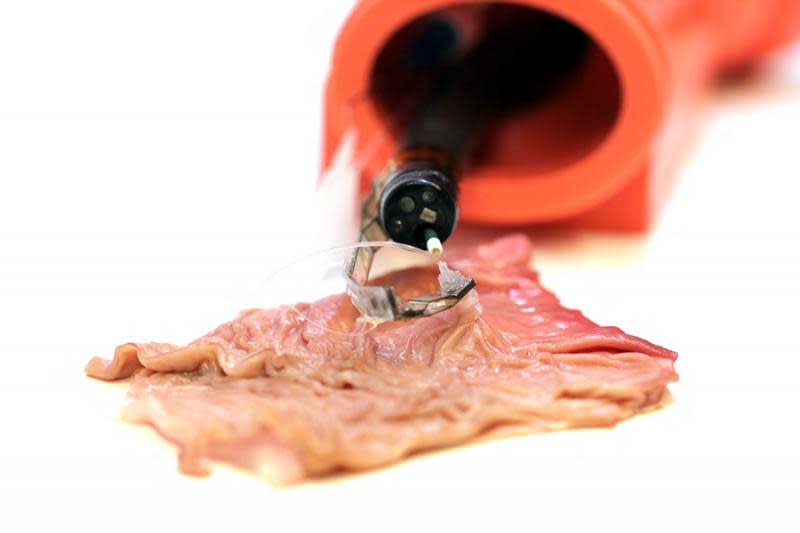Harvard's tiny robotic arm can make endoscopic surgery safer
It can be scaled down for incredibly sensitive procedures in the brain or lungs.
Minimally invasive surgery is already amazing as it is, but a team of Harvard scientists have created a device that expands its possible applications even further. They designed a tiny robotic arm that lays flat while the endoscope is moving through narrow passages and pops up to reveal tools surgeons can use for the procedure. Unlike the typical surgical tools doctors use today, which are completely rigid, the team's creation has a hybrid design featuring a rigid skeleton surrounded by soft materials. Even better, it has sensing capabilities that can give the surgeon a sense of where the arm is, what it's touching and how it's moving.
By using a combination of the soft and rigid components -- connected to each other by chemical bond instead of adhesive -- the device is more flexible than completely rigid tools. Its soft parts include a suction cup that can handle tissues more gently than a hard and sharp tool can. The device also has a water-powered actuator, which is how it pops up for use after traveling through the body while lying flat on the endoscope.
Harvard says the fabrication method the team used is simple enough for bulk manufacturing. Further, the design can be scaled down to one millimeter for incredibly complex procedures in the lungs or the brain that would require an endoscope to travel through tiny spaces. The team already performed an ex-vivo (outside the body) test on a pig's stomach, but that's just the beginning. Before doctors can use it on actual patients, the team still has more tests to go: in fact, their next goal is to use it on a living animal.
Team member and paper co-author Robert Wood said:
"We are focused on some of the more challenging endoscopic techniques where tool dexterity and sensor feedback are at a premium and can potentially make the difference between success and failure."


